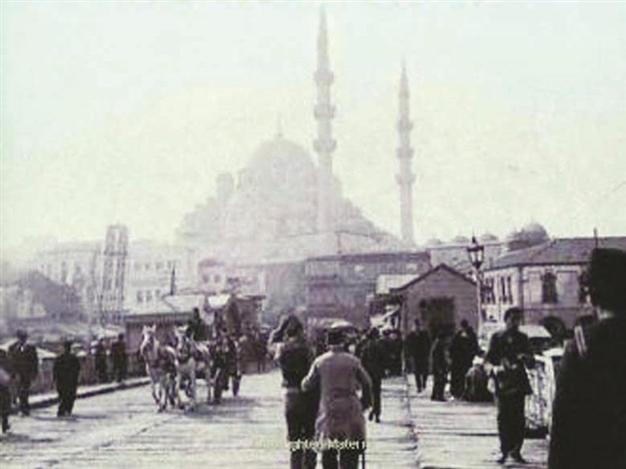Between Orient and Occident
William Armstrong - william.armstrong@hdn.com.tr
 ‘The Bridge: A Journey Between Orient and Occident’ by Geert Mak (Random House, 2010, 25 TL, pp 160)
‘The Bridge: A Journey Between Orient and Occident’ by Geert Mak (Random House, 2010, 25 TL, pp 160)The Galata Bridge is one of the more obvious metaphors for all those clichéd oppositions that Istanbul is famously caught between: Occident and Orient; east and west; tradition and modernity. The half-kilometer stretch across the Golden Horn connects the “historic” old Stamboul – with the imperial mosques, palaces and bazaars - to the “modern” Galata and Pera - originally settled by Genoese merchants and later the quarter of European ambassadors, diplomats, traders and artists.
Geert Mak roamed the entire European continent for his impressionistic 2004 travelogue “In Europe,” but this book offers a complete contrast in scale. “The Bridge” is described by the author as “a travelogue covering 490 meters,” his focus having infinitely narrowed to one bridge, in one corner of the old continent. It is subtitled “A Journey Between Orient and Occident,” but I suspect that’s a marketing decision from the publisher, rather than from Mak. He makes sure not to labor the cliché, instead focusing on the vicissitudes of today’s bridge-dwellers with an understated sensitivity.
Istanbul, he says, “is a classic city ... poverty has pitched its tent in the heart of the old city, the middle classes, ring after ring, live further and further away from [it].” With the city’s breakneck modernization continuing apace, this old arrangement is coming under increasing strain, but it still largely holds true. In a sense, the Galata Bridge is the center of this pitched tent, and Mak gives the reader a vivid sense of the consequences that an urban hand-to-mouth existence, (“an economy of spare change”), has on those who spend their lives on the bridge: “The lives of the tea seller, the cigarette boys and the insole vendor are set against the backdrop of a remarkable corner of the globe, but precious little good that does them.”
To anyone who has crossed the Galata Bridge recently, or got trapped in one of those underground shopping tunnels on either side, the sights described in the book will be familiar. Those knock-off children’s action figurines crawling mechanically in the lids of cardboard boxes; the fake perfumes; the fake mobile phones; the cheap sets of pens; the cheap tea; cheap shoes; jeans; umbrellas; shoelaces; smuggled cigarettes; condoms. However, Mak’s chief interest is in the people behind these items - the bridge’s unique fauna. He introduces the lottery ticket sellers, the glue-sniffers, the pickpockets, and the indefatigable fishermen dangling rods into the murky Golden Horn. Most are originally from somewhere in Eastern Anatolia, a mass of rootless internal migrants that makes up an ever increasing proportion of Istanbul’s uncontrollably booming population. They speak about their backgrounds, their daily routine, the starkness of their prospects, the financial knife-edge that a living scraped by selling cheap plastic umbrellas from a cardboard box entails, and the psychological contortions required to maintain some sense of personal dignity or honor. As one man (and this is a resolutely male landscape) says: “Everyone here, almost all of us come from the back of beyond ... [We] have no choice but to make the best of things here, to sell tea, or flog pirated CDs, or shift stolen mobile phones, or sell fake perfume...” Almost all harbor dreams of migrating to Europe. One of the umbrella sellers once tried to smuggle himself into London, but was detected by the immigration authorities at Heathrow, sent back to Turkey, and now dreams of suing Britain.
Mak is never boring, but he’s on less sure ground when trying to chart a course through the choppy waters of the city’s modern political situation. One pages-long section in particular - attempting to unknot the delicate “headscarf question” - feels like a stale hunk of meat thrown only because he knows that his western audience will be interested in such things.
Still, overall this is a warm-spirited, well-judged book. Describing the brutal realities of a life spent in perpetual, unbreakable poverty, it would be easy to slip into mawkishness, but Mak never does. He is occasionally lyrical, but he never patronizes or succumbs to sentimentality. It’s a smart trick: by focusing on a small geographical area and a limited cast of characters, he is able to give us a convincing, holistic portrait of a wider society and its conflicted place in history.
Noteworthy recent release

(Cambridge University Press, 100 TL, pp 312)










